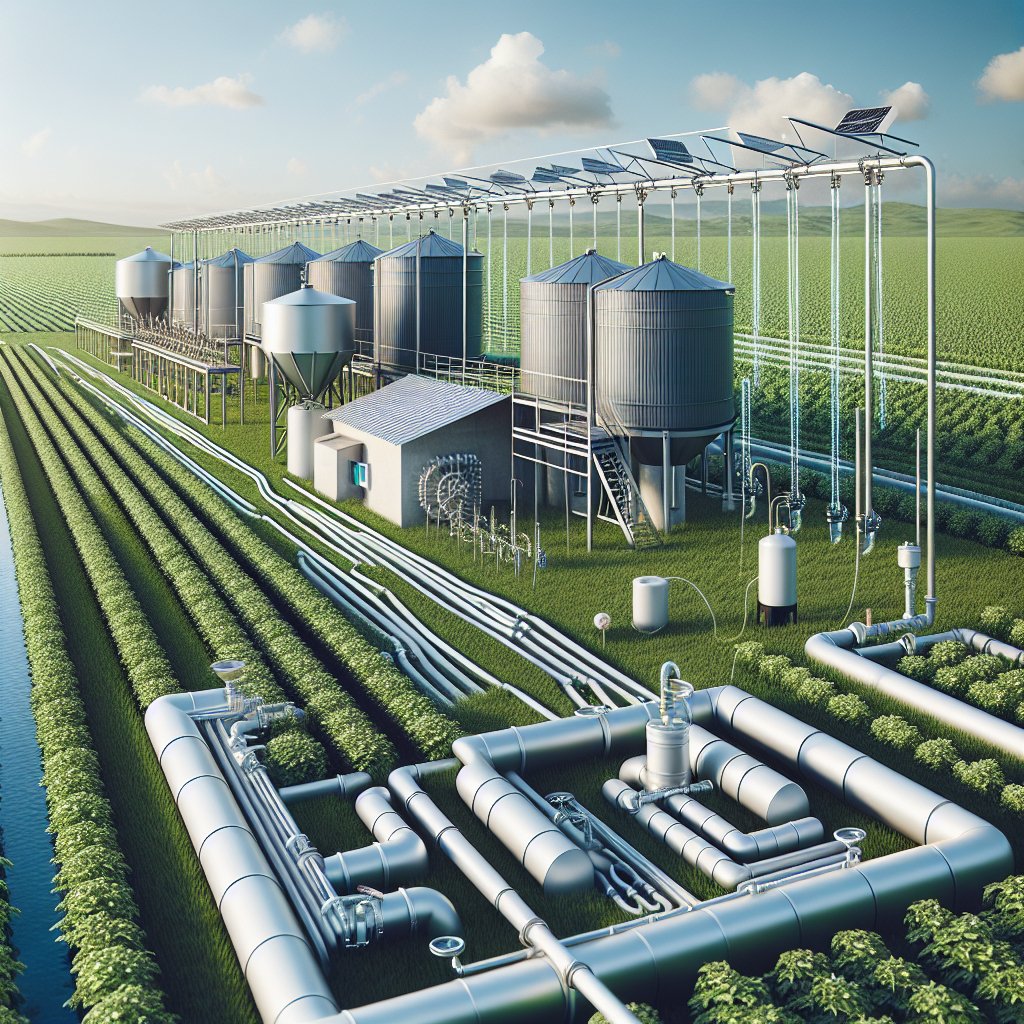
Building a rainwater harvesting system for your farm can significantly enhance water management and sustainability. As water scarcity becomes an increasing concern worldwide, farmers are turning to innovative solutions to ensure a reliable water supply for their crops and livestock. Rainwater harvesting is an effective method that not only conserves water but also reduces dependency on traditional water sources. This article will guide you through the process of setting up a rainwater harvesting system on your farm, covering essential components, design considerations, and maintenance practices.
Understanding Rainwater Harvesting
Rainwater harvesting involves collecting and storing rainwater for later use. This practice has been used for centuries and is gaining renewed interest due to its environmental and economic benefits. By capturing rainwater, farmers can reduce their reliance on groundwater and municipal water supplies, which are often expensive and subject to restrictions during droughts.
Benefits of Rainwater Harvesting
There are numerous advantages to implementing a rainwater harvesting system on your farm:
- Cost Savings: By using harvested rainwater, you can reduce your water bills and lower the costs associated with pumping groundwater.
- Environmental Impact: Harvesting rainwater reduces the strain on local water resources and helps mitigate the effects of droughts.
- Improved Crop Yields: Consistent water supply can lead to healthier crops and increased yields.
- Soil Conservation: Properly managed rainwater can prevent soil erosion and improve soil health.
Components of a Rainwater Harvesting System
A typical rainwater harvesting system consists of several key components:
- Catchment Area: This is the surface that collects rainwater, usually a roof or a specially designed catchment surface.
- Gutters and Downspouts: These direct the collected rainwater from the catchment area to the storage system.
- Storage Tanks: Tanks or cisterns store the harvested rainwater for future use.
- Filtration System: Filters remove debris and contaminants from the collected water.
- Distribution System: Pipes and pumps distribute the stored water to where it is needed on the farm.
Designing Your Rainwater Harvesting System
Designing an effective rainwater harvesting system requires careful planning and consideration of various factors. The following sections outline the steps involved in designing a system tailored to your farm’s needs.
Assessing Water Needs
Before designing your system, it’s crucial to assess your farm’s water needs. Consider the following:
- Crops and Livestock: Determine the water requirements for your crops and livestock. Different plants and animals have varying water needs.
- Climate: Analyze the local climate and rainfall patterns to estimate the amount of rainwater you can collect.
- Existing Water Sources: Evaluate your current water sources and how rainwater harvesting can supplement them.
Calculating Catchment Area
The catchment area is a critical component of your rainwater harvesting system. To calculate the potential water collection, use the following formula:
Rainwater Harvested (liters) = Catchment Area (m²) x Rainfall (mm) x Runoff Coefficient
The runoff coefficient accounts for water loss due to evaporation and absorption. For most roofs, a coefficient of 0.8 is appropriate.
Selecting Storage Tanks
Choosing the right storage tanks is essential for maximizing the efficiency of your system. Consider the following factors:
- Capacity: The tank’s capacity should match your water needs and the amount of rainwater you can collect.
- Material: Tanks are available in various materials, including plastic, concrete, and metal. Each has its advantages and disadvantages.
- Location: Place tanks in a location that allows easy access for maintenance and distribution.
Implementing Filtration Systems
Filtration is crucial to ensure the quality of the harvested rainwater. Consider installing the following types of filters:
- First Flush Diverters: These devices divert the initial flow of rainwater, which may contain debris and contaminants, away from the storage tanks.
- Leaf Screens: These screens prevent leaves and larger debris from entering the system.
- Fine Filters: Install fine filters to remove smaller particles and impurities from the water.
Maintaining Your Rainwater Harvesting System
Regular maintenance is essential to ensure the longevity and efficiency of your rainwater harvesting system. The following practices will help keep your system in optimal condition:
Inspecting and Cleaning Components
Regularly inspect and clean all components of your system, including:
- Gutters and Downspouts: Remove leaves and debris to prevent blockages.
- Storage Tanks: Clean tanks periodically to prevent algae growth and sediment buildup.
- Filters: Check and clean filters to maintain water quality.
Monitoring Water Quality
Regularly test the quality of your harvested rainwater to ensure it is safe for use. Consider testing for:
- pH Levels: Ensure the water’s pH is suitable for your crops and livestock.
- Contaminants: Test for potential contaminants, such as bacteria and heavy metals.
Adapting to Seasonal Changes
Adjust your rainwater harvesting practices based on seasonal variations in rainfall. During dry periods, monitor water levels closely and prioritize essential uses. In wet seasons, ensure your system can handle increased water flow without overflowing.
Conclusion
Implementing a rainwater harvesting system on your farm is a sustainable and cost-effective way to manage water resources. By understanding the components, design considerations, and maintenance practices, you can create a system that meets your farm’s unique needs. With proper planning and regular upkeep, rainwater harvesting can provide a reliable water supply, improve crop yields, and contribute to environmental conservation.

